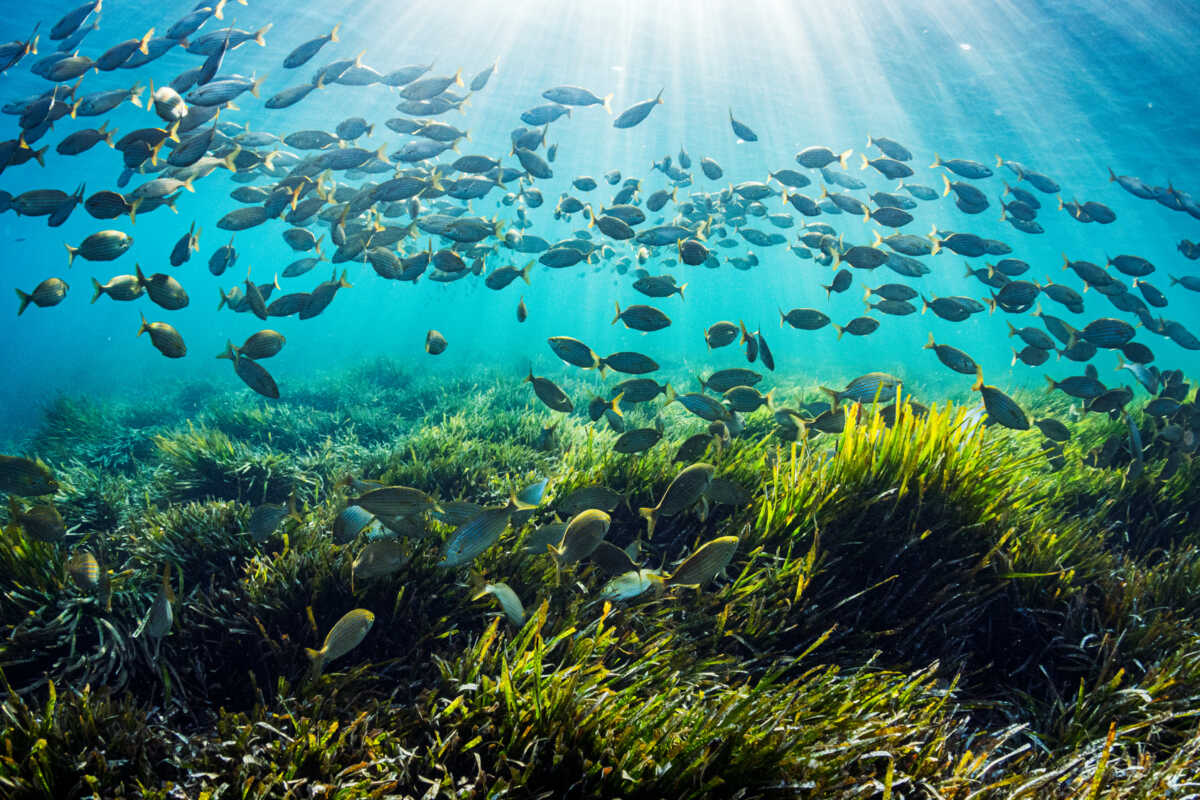Devil in the detail for Tasmanian seagrass restoration

At OzFish, we’re aware more than most of the importance of seagrass meadows and the extent to which this vital habitat has disappeared from Australia’s coastline.
It is estimated that Australia has lost almost 30 per cent of its seagrass meadows since 18801. Tasmania has not escaped unscathed, with much of the state’s seagrass habitats having been lost, fragmented, or damaged.
However, the restoration of seagrass in Tasmanian waters is getting underway and we’re proud to be playing a leading role.
Why is seagrass so important?
Seagrass meadows provide food, shelter, and nursery grounds for juvenile fish, including many of our favourite species such as calamari, flathead, whiting, garfish, bream, snapper, sea mullet, luderick, and even leather jackets.
One hectare of seagrass is estimated to produce an average of 207 kilograms of fish per year more than an equivalent area without seagrass. They also provide a wealth of ecosystem services such as water filtration, sediment stabilisation, and carbon sequestration, as well as helping to protect coastlines from storms.
Seagrass is just one link in a chain that creates healthy aquatic ecosystems, and it is a habitat that cannot succeed or fail on its own. An example of this is how seagrass meadows and shellfish reefs combine.
Shellfish reefs are fantastic filtration systems, helping to remove sediment from water and so improve its quality and clarity. This helps light to penetrate the water and, in turn, benefits a habitat such as seagrass meadows which are located on the ocean’s floor.
More light reaching here allows seagrass seeds to germinate and the meadows to thrive, which in turn supports native fish populations.
At OzFish, we are committed to taking a holistic approach to habitat restoration, ensuring that we are helping to create ecosystems that provide sustainable benefits to whole areas for many years to come.
The damage done
Tasmania’s seagrass meadows have been depleted by a range of activities, such as heavily modifying catchments, development, sewage and stormwater discharges, urban runoff, dredging, boating, and land reclamation.
These, coupled with changes in water temperature, have meant that the distribution of some seagrasses has altered in recent years. Human pollution has contributed most to the decline of seagrass globally.
High levels of nutrients entering the water, from agriculture and urban runoff, cause algae blooms that negatively impact seagrass. Increased suspended sediment in the water reduces the available light which is also detrimental to seagrass.
The sediment can come from development on land or boating activity that may stir up the ocean floor.
There has been some natural grow back of seagrass in small, isolated areas but, overall, seagrass meadows are continuing to decline around Tasmania’s coasts.
Many native fish species rely on the seagrass as a breeding and feeding ground so their disappearance is having a significant impact on them. Ultimately, loss of seagrass habitat will mean reductions in marine ecosystem productivity and extinction of species that rely on them for survival. Last but not least, this means you’ll be catching less fish.
How can we reverse the decline?
At OzFish, our seagrass restoration initiative is the largest community-led program in Australia and we’re bringing our experience and expertise to Tasmania.
In partnership with the Institute for Marine and Antarctic Studies (IMAS), and funded by QBE Foundation, we’ll be launching the state’s first seagrass restoration trial. The trial will help us find out what does and doesn’t work in Tasmanian waters, helping develop restoration approaches and providing critical data that will inform and enable future large-scale Zostera seagrass restoration in the region.
We’re also working alongside NRM South and researchers from CSIRO to install Environmentally Friendly Moorings (EFMs) in North West Bay, southern Tasmania.
Traditional chain moorings drag along the ocean floor when boats move in the wind and currents. This dragging action rips out the seagrass from the seafloor, leaving it barren.
Each mooring can remove up to 1,000m2 (0.1 hectare) of marine habitat. When many moorings are deployed in one area, the patchwork effect on habitats can lead to a total collapse of communities such as seagrass meadows.
The EFMs, designed by CSIRO, give seagrass habitat a chance to recover and prevent future habitat damage. The project will see a trial of the new moorings and monitor the recovery of underlying seagrass habitats, working towards an increased uptake of EFMs in the region.
Seagrass restoration around Australia
Our seagrass activity in Tasmania is just one part of our effort to restore this vitally important habitat in locations across Australia.
Visit our dedicated seagrass page to find out more and learn how you can get directly involved in one of our projects in your state.
1 Waycott et al., 2009, Statton et al., 2018





